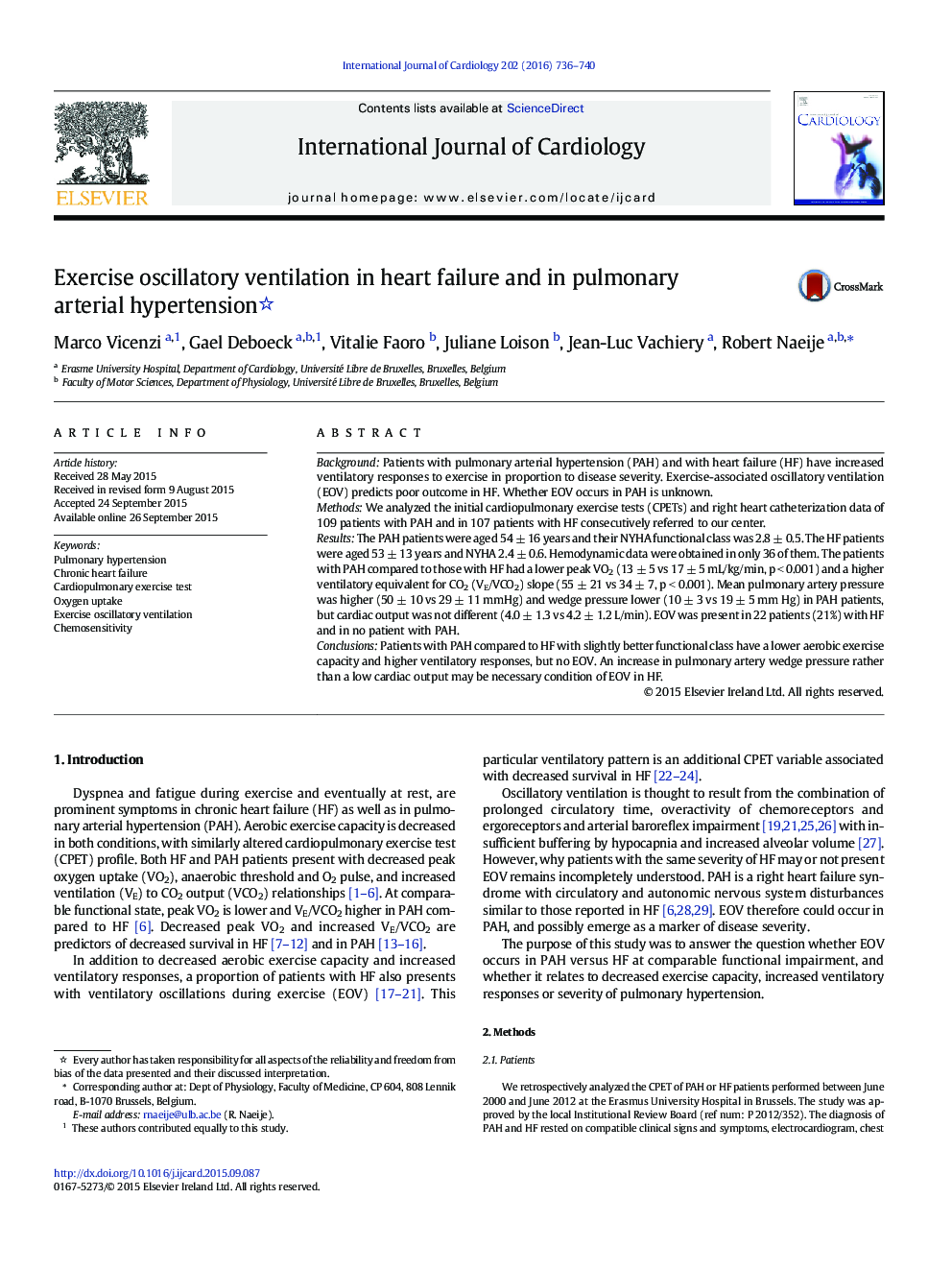| کد مقاله | کد نشریه | سال انتشار | مقاله انگلیسی | نسخه تمام متن |
|---|---|---|---|---|
| 5965437 | 1576149 | 2016 | 5 صفحه PDF | دانلود رایگان |
BackgroundPatients with pulmonary arterial hypertension (PAH) and with heart failure (HF) have increased ventilatory responses to exercise in proportion to disease severity. Exercise-associated oscillatory ventilation (EOV) predicts poor outcome in HF. Whether EOV occurs in PAH is unknown.MethodsWe analyzed the initial cardiopulmonary exercise tests (CPETs) and right heart catheterization data of 109 patients with PAH and in 107 patients with HF consecutively referred to our center.ResultsThe PAH patients were aged 54 ± 16 years and their NYHA functional class was 2.8 ± 0.5. The HF patients were aged 53 ± 13 years and NYHA 2.4 ± 0.6. Hemodynamic data were obtained in only 36 of them. The patients with PAH compared to those with HF had a lower peak VO2 (13 ± 5 vs 17 ± 5 mL/kg/min, p < 0.001) and a higher ventilatory equivalent for CO2 (VE/VCO2) slope (55 ± 21 vs 34 ± 7, p < 0.001). Mean pulmonary artery pressure was higher (50 ± 10 vs 29 ± 11 mmHg) and wedge pressure lower (10 ± 3 vs 19 ± 5 mm Hg) in PAH patients, but cardiac output was not different (4.0 ± 1.3 vs 4.2 ± 1.2 L/min). EOV was present in 22 patients (21%) with HF and in no patient with PAH.ConclusionsPatients with PAH compared to HF with slightly better functional class have a lower aerobic exercise capacity and higher ventilatory responses, but no EOV. An increase in pulmonary artery wedge pressure rather than a low cardiac output may be necessary condition of EOV in HF.
Journal: International Journal of Cardiology - Volume 202, 1 January 2016, Pages 736-740
